Holistic SEO
15 Effective Strategies for Better Search Engine Rankings

Are you annoyed because your website is buried deep in search engine results? We’ve got the solution for you!
In this article, we’ll reveal 15 effective strategies that will skyrocket your website’s rankings. From conducting thorough keyword research to optimizing meta tags and descriptions, we’ll show you the ropes to climb to the top.
So, buckle up and get ready to master the art of search engine optimization!
Key Takeaways
- Thorough keyword research and analysis are essential for identifying relevant and high-performing keywords for website optimization.
- On-page optimization techniques, such as using targeted keywords in headings and throughout the content, contribute to better search engine rankings.
- Effective use of meta tags, including meta title, meta description, and meta keywords, helps search engines understand and rank web pages.
- Creating high-quality and relevant content, including engaging storytelling and interactive visuals, attracts organic traffic and provides value to the audience.
Keyword Research and Analysis
In our pursuit of better search engine rankings, we begin by delving into the crucial task of conducting keyword research and analysis.
Competitor analysis is an integral part of this process. By studying our competitors’ strategies, we can gain valuable insights into the keywords they’re targeting and identify any untapped opportunities. This helps us understand the competitive landscape and make informed decisions about our own keyword selection.
Another important aspect of keyword research is identifying long tail keywords. These are longer, more specific phrases that may have lower search volume but higher conversion potential. By incorporating long tail keywords into our content, we can target a more niche audience and increase the likelihood of attracting qualified traffic.
On-Page Optimization Techniques
Let’s now talk about some important on-page optimization techniques that can help improve search engine rankings.
Two key aspects of on-page optimization are meta tags and keywords. By optimizing meta tags with relevant keywords, we can provide search engines with valuable information about our webpages.
Additionally, content optimization tips, such as using targeted keywords in headings and throughout the content, can further enhance the visibility and relevance of our webpages in search results.
Meta Tags and Keywords
After conducting thorough research, we discovered that utilizing effective meta tags and strategically chosen keywords significantly improves search engine rankings. To optimize your website’s on-page content, consider the following:
- Using meta tags effectively: Meta tags provide information about your web page to search engines. Make sure to include relevant keywords in the meta title, meta description, and meta keywords tag. This helps search engines understand the content of your page and rank it accordingly.
- Importance of keyword research and analysis: Conduct thorough keyword research to identify the most relevant and high-performing keywords for your website. Use tools like Google Keyword Planner or SEMrush to find keywords with high search volume and low competition. Incorporate these keywords naturally throughout your content to improve search engine visibility.
- Monitoring and adjusting: Keep track of your website’s performance using analytics tools. Analyze the keywords that are driving traffic and conversions. Continuously monitor and adjust your keyword strategy to stay ahead of the competition and maintain high search engine rankings.
Content Optimization Tips
How can we effectively optimize our website’s content to improve search engine rankings?
Content optimization is crucial for achieving higher rankings on search engines. To create SEO-friendly content, start by conducting keyword research and incorporating relevant keywords into your content.
Use headings, subheadings, and bullet points to organize your content and make it easier to read. Additionally, ensure that your content is valuable and informative to your audience.
Engage your readers by including relevant images, videos, and infographics. Promote your content on social media platforms and encourage others to share it.
Regularly update and refresh your content to keep it current and relevant.
High-Quality and Relevant Content Creation
When it comes to improving search engine rankings, high-quality and relevant content creation plays a crucial role.
One important aspect is conducting thorough keyword research to identify the most relevant and valuable terms to target. By creating engaging and informative content that incorporates these keywords naturally, we can’t only attract more organic traffic but also provide value to our audience.
Additionally, focusing on a user-friendly website design can enhance the overall user experience and keep visitors engaged for longer periods, which can positively impact search engine rankings.
Keyword Research Importance
To effectively improve search engine rankings, we prioritize the importance of keyword research in creating high-quality and relevant content. Keyword research is the foundation of any successful SEO strategy. Here are three reasons why it’s crucial:
- Long tail keywords: By identifying and targeting long tail keywords, we can tap into more specific search queries and capture highly targeted traffic. These keywords often have lower competition, making it easier for our content to rank higher in search engine results.
- Competitor analysis: Understanding what keywords our competitors are targeting can give us valuable insights into our industry and help us identify gaps in the market. By conducting thorough competitor analysis, we can develop a comprehensive keyword strategy and create content that stands out from the competition.
- Content optimization: Keyword research allows us to optimize our content by incorporating relevant keywords naturally. By strategically placing keywords in our content, we can improve its visibility to search engines and increase our chances of ranking higher.
Engaging and Informative
Creating engaging and informative content is crucial for improving search engine rankings. It allows us to effectively captivate and educate our audience. By incorporating engaging storytelling and interactive visuals, we can create a compelling user experience that keeps visitors on our website for longer periods of time.
Engaging storytelling involves crafting narratives that resonate with our target audience, drawing them in and making them emotionally invested in our content. Interactive visuals, such as videos, infographics, and interactive graphics, provide a dynamic and visually appealing way to present information.
These elements not only enhance the user experience but also increase the likelihood of social sharing and backlinking, which are important factors in search engine rankings.
In the next section, we’ll discuss the importance of user-friendly website design in further improving search engine rankings.
User-Friendly Website Design
To further enhance our search engine rankings, we continue to prioritize user-friendly website design by creating high-quality and relevant content. A user-friendly website design is essential for attracting and retaining visitors, as well as improving conversion rates. Here are three key elements to consider:
- Responsive design: With the increasing use of mobile devices, it’s crucial to have a website that adapts seamlessly to different screen sizes. Responsive design ensures that your website looks and functions well on both desktop and mobile devices, providing an optimal user experience.
- High-quality content creation: Creating valuable and informative content that meets the needs of your target audience is crucial for SEO success. By providing relevant and engaging content, you can establish your website as a trusted source of information and increase organic traffic.
- Conversion rate optimization: Optimizing your website for conversions involves making strategic adjustments to improve the user experience and encourage visitors to take desired actions. This can include clear calls-to-action, intuitive navigation, and streamlined checkout processes.
Optimizing Meta Tags and Descriptions
By optimizing meta tags and descriptions, we can improve our search engine rankings.
Meta tags are HTML elements that provide information about a webpage to search engines. They include the title tag, meta description, and meta keywords.
Optimizing title tags is crucial as they’re displayed as the clickable headline in search engine results. It’s important to make them concise, descriptive, and keyword-rich to attract users and improve the click-through rate.
Meta descriptions, on the other hand, provide a summary of the webpage’s content. They should be compelling, relevant, and include relevant keywords to encourage users to click on the link.
Proper URL Structure and Keyword Usage
When it comes to search engine rankings, proper URL structure and keyword usage play a crucial role.
Our website’s URLs should be concise, descriptive, and include relevant keywords to improve visibility in search results.
URL Importance and Keywords
Our team focuses on optimizing URLs and strategically incorporating keywords for improved search engine rankings. When it comes to URL structure optimization, there are a few key factors to consider:
- Keep it simple and descriptive: A clear and concise URL that accurately reflects the content of the page is more likely to attract clicks and improve search rankings. Avoid using complex or lengthy URLs that confuse both search engines and users.
- Include keywords strategically: Incorporating relevant keywords in your URL can help search engines understand the content of your page. However, it’s important to strike a balance and avoid keyword stuffing, as this can have a negative impact on your rankings.
- Use hyphens to separate words: Hyphens are the preferred method of separating words in URLs. They make it easier for both search engines and users to read and understand the URL structure.
Optimizing URL Structure
Optimizing the URL structure and incorporating keywords strategically is essential for improving search engine rankings. Improving site architecture and URL structure optimization are key components of effective SEO strategies.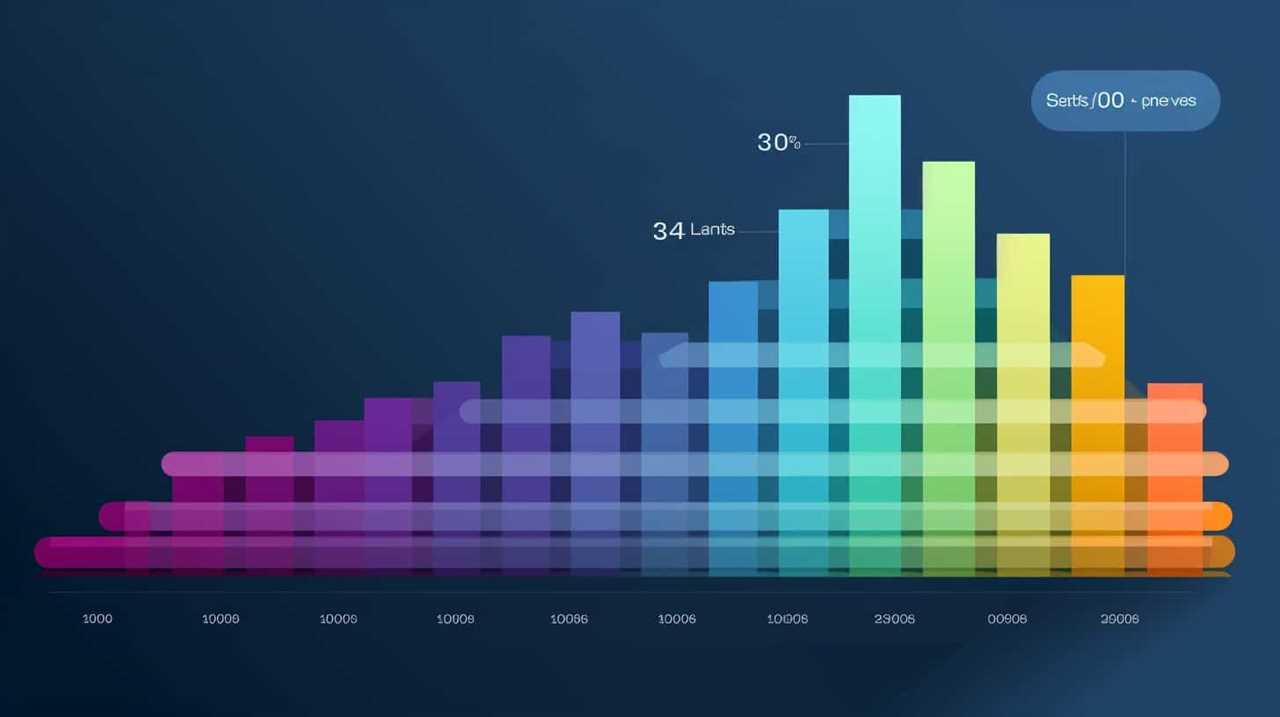
When it comes to URL structure, it’s important to keep it concise, descriptive, and relevant to the content of the page. Including keywords in the URL can also help search engines understand the context and relevance of the page. For example, instead of using a generic URL like ‘www.example.com/page1’, it’s better to use a URL like ‘www.example.com/optimizing-url-structure’ that clearly indicates the topic of the page.
By optimizing the URL structure and incorporating relevant keywords, search engines can better understand and index your website, leading to improved search engine rankings.
Transition: Now that we’ve discussed optimizing the URL structure, let’s move on to the next crucial aspect of improving search engine rankings – mobile-friendly website design.
Mobile-Friendly Website Design
One essential strategy for improving search engine rankings is to ensure that our website is optimized for mobile devices. With the increasing use of smartphones and tablets to access the internet, having a mobile-friendly website design is crucial.
Here are three key elements to consider for effective mobile optimization:
- Responsive design: This approach allows our website to adapt and adjust its layout dynamically based on the user’s device screen size. It ensures that our content is displayed correctly and is easily accessible on any device.
- Fast loading speed: Mobile users expect quick loading times. Optimizing images, minimizing code, and leveraging caching techniques can significantly improve our website’s loading speed and enhance the user experience.
- Mobile-friendly navigation: Simplify the navigation menu and ensure it’s easy to use on smaller screens. Utilize clear and concise labels, drop-down menus, and intuitive icons to enhance navigation efficiency.
User-Friendly Navigation and Site Architecture
To improve search engine rankings, we prioritize creating a user-friendly navigation and site architecture. Website usability plays a crucial role in attracting and retaining visitors, which ultimately affects search engine rankings. When designing the navigation and architecture of a website, it is important to consider the needs and preferences of the users. Clear and intuitive navigation menus, breadcrumbs, and site maps enhance the user experience and make it easier for visitors to find what they are looking for. Additionally, a well-organized site architecture helps search engine algorithms understand the hierarchy and structure of the website, which can positively impact search engine rankings. By focusing on website usability and optimizing navigation and site architecture, businesses can improve their visibility and attract more organic traffic.
| Navigation Best Practices | Site Architecture Tips |
|---|---|
| Use descriptive labels for navigation menus | Create a logical hierarchy |
| Incorporate breadcrumbs for easy navigation | Optimize URL structure |
| Implement search functionality for quick access to content | Use internal linking to connect related pages |
Link Building and Backlink Acquisition
When it comes to link building and backlink acquisition, there are a few key points to keep in mind.
First, it’s important to focus on quality rather than quantity when it comes to acquiring backlinks. Natural link building is crucial, as search engines value organic and genuine links.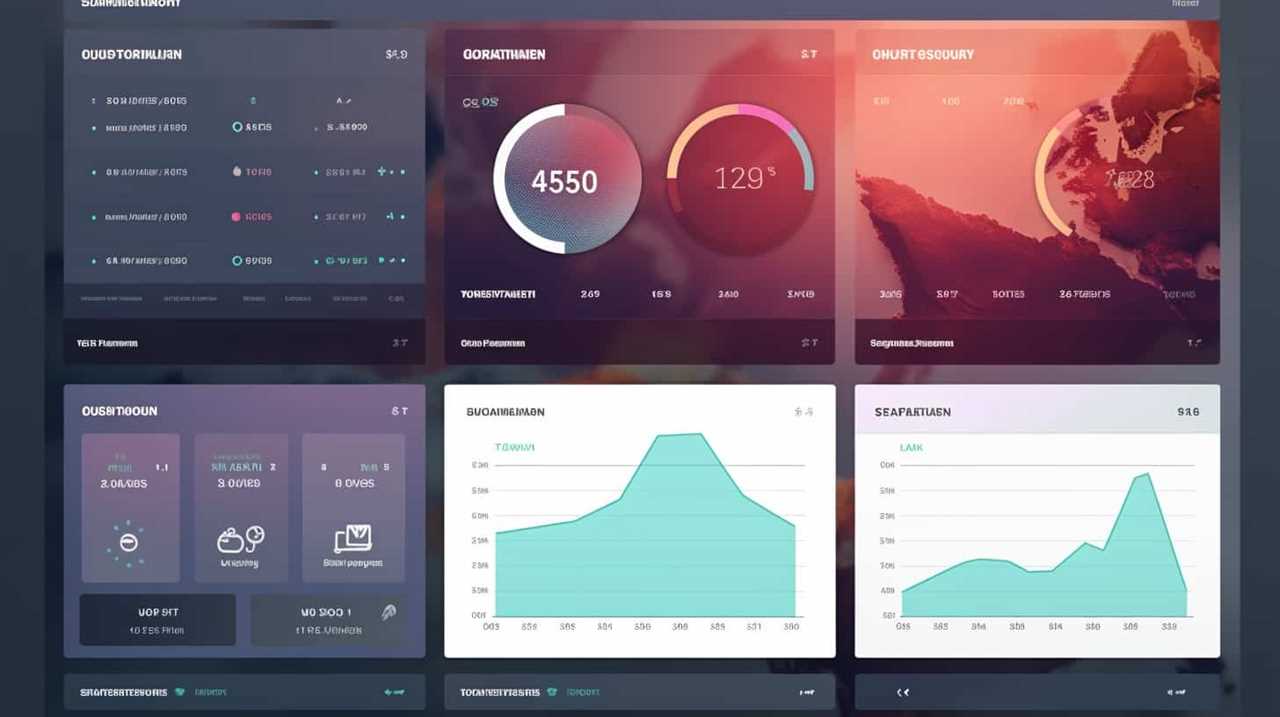
Additionally, the relevancy of the links is of utmost importance, as links from relevant and authoritative websites can significantly boost your search engine rankings.
Quality Vs. Quantity
We prioritize quality over quantity when it comes to link building and acquiring backlinks for better search engine rankings. Here are three reasons why:
- Impact on search rankings: Backlinks play a crucial role in determining a website’s search engine rankings. High-quality backlinks from authoritative sources can significantly boost your website’s visibility and credibility in the eyes of search engines.
- Importance of user experience: Search engines are increasingly prioritizing user experience as a ranking factor. By focusing on quality backlinks, you can ensure that the linked content is relevant, valuable, and enhances the overall user experience. This, in turn, can lead to higher search rankings.
- Avoiding penalties: Quantity-focused link building strategies often involve acquiring low-quality or spammy backlinks, which can result in penalties from search engines. By prioritizing quality, you can avoid these penalties and maintain a strong online presence.
By understanding the impact of backlinks on search rankings and the importance of user experience in SEO, we can make informed decisions and focus on acquiring high-quality backlinks.
Now, let’s delve into the next section on natural link building.
Natural Link Building
Now let’s explore the benefits of natural link building for improving search engine rankings through the acquisition of high-quality backlinks.
Natural link building is a crucial aspect of any effective SEO strategy. It involves the organic acquisition of backlinks from reputable websites, rather than resorting to artificial or spammy tactics.
By focusing on natural link acquisition, you can build a strong and credible online presence that search engines value. High-quality backlinks earned through natural link building strategies signal to search engines that your website is trustworthy and relevant.
This can result in higher search engine rankings and increased visibility for your website.
In the next section, we’ll delve into the importance of link relevancy in further optimizing your search engine rankings.
Link Relevancy Importance
To understand the importance of link relevancy in improving search engine rankings, it’s essential to focus on the quality and relevance of the backlinks acquired through link building and backlink acquisition strategies.
When it comes to link building strategies, relevance is key. Here are three reasons why link relevancy is important for better search engine rankings:
- Enhanced Authority: Backlinks from relevant websites signal to search engines that your content is trustworthy and authoritative in a particular niche. This can boost your website’s overall authority and improve its rankings.
- Increased Organic Traffic: Backlinks from relevant sources can attract targeted organic traffic to your website. When other websites within your niche link to your content, it increases the chances of attracting visitors who are genuinely interested in what you have to offer.
- Anchor Text Importance: The anchor text used in the backlinks plays a crucial role in determining the relevancy of the link. By using anchor text that accurately describes the linked content, search engines can better understand the context and relevance of the link.
Social Media Integration and Promotion
By incorporating social media integration and promotion into our SEO strategy, we can increase our search engine rankings and drive more organic traffic to our website.
Social media has become an integral part of people’s lives, and leveraging its power can greatly benefit our online presence.
One effective strategy is to form influencer partnerships, where we collaborate with popular social media figures who have a large following in our target audience. These influencers can help promote our brand and generate buzz, leading to increased visibility and credibility.
Additionally, social media advertising allows us to reach a wider audience by targeting specific demographics and interests.
Regularly Updating and Refreshing Content
One way to improve search engine rankings is through regularly updating and refreshing content with the help of a content management system. Keeping your website’s content up-to-date is crucial for maintaining high search engine rankings.
Here are three key reasons why updating and refreshing your content regularly is important:
- Improved SEO: Search engines value fresh and relevant content. By updating your website frequently, search engines will view your site as active and valuable, which can help improve your search engine rankings.
- Increased User Engagement: Updating your content regularly keeps your visitors engaged and encourages them to return to your site. Fresh and informative content helps establish you as an authority in your industry and builds trust with your audience.
- Higher Conversion Rates: Fresh content can have a positive impact on your conversion rates. When visitors see that your website is regularly updated, they’re more likely to trust your brand and take the desired actions, such as making a purchase or filling out a form.
Optimizing Images and Multimedia Elements
We frequently optimize images and multimedia elements to further enhance our search engine rankings and improve user engagement.
Image optimization techniques play a crucial role in ensuring that our website loads quickly and provides a seamless user experience. By compressing images, using descriptive file names, and adding alt text, we improve our chances of ranking higher in image search results.
Additionally, optimizing multimedia elements such as videos and audio files helps to increase user engagement and dwell time on our website. This can be achieved by providing transcripts, captions, and appropriate metadata.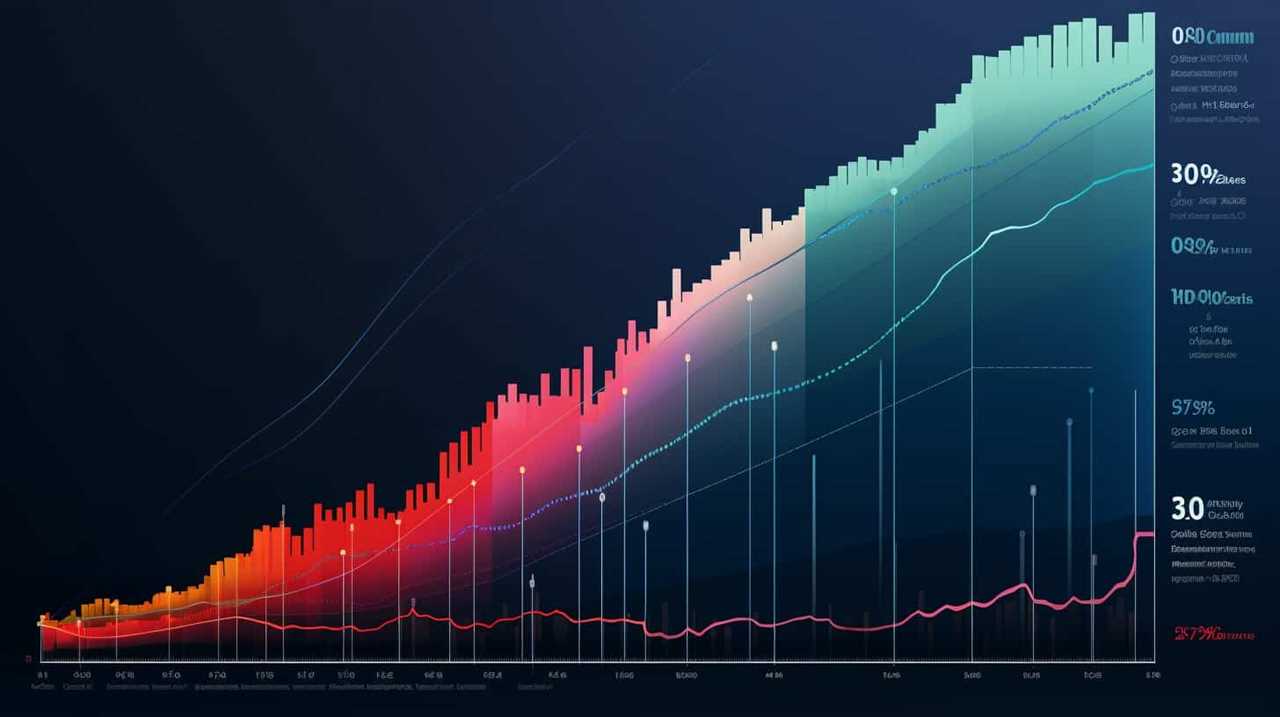
By employing these image optimization techniques and optimizing our multimedia elements, we not only enhance our search engine rankings but also provide a better experience for our users.
Moving forward, let’s explore the next strategy of utilizing schema markup for better visibility.
Utilizing Schema Markup for Better Visibility
To improve visibility in search engine rankings, we can enhance our website by utilizing schema markup. Schema markup is a code that we can add to our website to provide search engines with more detailed information about our content.
Here are three key ways schema markup implementation can enhance search engine visibility:
- Rich snippets: By using schema markup, we can enable search engines to display additional information about our website directly in the search results. This can include star ratings, images, prices, and more, which can make our listing stand out and attract more clicks.
- Knowledge graph: Schema markup can help search engines understand the context and relationships between different elements of our website. This can increase the chances of our website being featured in the knowledge graph, a prominent display of information on the search results page.
- Local SEO: Schema markup can also be used to provide search engines with specific details about our business, such as address, phone number, and operating hours. This can improve our visibility in local search results and help potential customers find us more easily.
By implementing schema markup, we can enhance our website’s visibility in search engine rankings and attract more organic traffic.
Now, let’s move on to the next topic: monitoring and improving website loading speed.
Monitoring and Improving Website Loading Speed
Improving website loading speed is essential for achieving optimal search engine rankings. A slow-loading website not only frustrates users but also negatively impacts search engine rankings. One effective strategy to improve loading speed is website caching. Website caching involves storing frequently accessed website data and serving it to users, reducing the need for repeated requests to the server. This significantly improves loading times and enhances user experience. Another important factor to consider is server response time, which refers to the time it takes for the server to respond to a request from a user’s browser. A slow server response time can lead to delays in loading web pages. Monitoring and optimizing server response time is crucial for ensuring fast loading speed and improving search engine rankings.
| Strategies for Improving Website Loading Speed |
|---|
| 1. Utilize website caching to store frequently accessed data. |
| 2. Monitor and optimize server response time. |
| 3. Use tools like Google PageSpeed Insights to identify and fix potential issues. |
Encouraging User Engagement and Interaction
One key aspect for achieving better search engine rankings is fostering user engagement and interaction on your website. By increasing user engagement and improving user interactions, you can create a more interactive and enjoyable experience for your visitors. Here are three strategies to encourage user engagement and interaction:
- Provide valuable and relevant content: Offer informative articles, engaging videos, and helpful resources that keep users on your site longer and encourage them to explore further.
- Encourage social sharing: Include social sharing buttons on your content so users can easily share it with their networks. This not only increases user engagement but also helps to boost your website’s visibility and reach.
- Implement interactive features: Incorporate interactive elements such as quizzes, polls, and surveys to encourage user participation and gather valuable feedback. This not only enhances user engagement but also provides insights that can be used to improve your website and offerings.
Analyzing and Tracking Performance Metrics
We analyze and track performance metrics to gauge the effectiveness of our strategies for better search engine rankings.
Performance analysis allows us to measure and evaluate various aspects of our website’s performance, such as organic traffic, page load speed, bounce rate, and conversion rates.
By tracking these metrics, we can identify areas for improvement and make data-driven decisions to optimize our SEO efforts.
Additionally, tracking metrics helps us identify trends and patterns in user behavior, allowing us to adjust our strategies accordingly.
Tools like Google Analytics provide valuable insights into user engagement, keyword performance, and referral sources.
Frequently Asked Questions
How Can I Track and Analyze the Performance Metrics of My Website?
We can track and analyze the performance metrics of our website by using website analytics tools. These tools provide valuable data on traffic, user behavior, and conversions, helping us make informed decisions to improve our website’s performance.
What Are Some Strategies to Encourage User Engagement and Interaction on My Website?
To encourage user engagement and interaction on our website, we can implement user retention strategies such as personalized recommendations and gamification techniques like badges and leaderboards. These tactics can enhance the overall user experience and increase user participation.
How Can I Improve the Loading Speed of My Website?
Improving website performance by optimizing website loading speed is crucial for better user experience. We can achieve this by optimizing images, minifying code, and leveraging browser caching, among other strategies.

What Are Some Effective Techniques for Monitoring and Improving Website Loading Speed?
To improve website loading speed, we recommend implementing effective techniques for website performance monitoring and optimizing website images. These strategies will enhance user experience, increase website efficiency, and boost search engine rankings.
How Can I Integrate Social Media Into My Website and Promote It Effectively?
We can integrate social media into our website and promote it effectively by creating shareable content, engaging with our audience, utilizing social media advertising, and collaborating with influencers in our industry.
How Does Content Optimization Contribute to Better Search Engine Rankings?
Content optimization improves search rankings by using keywords and other optimization techniques to make a website more visible to search engines. When the content is well-structured and aligned with search engine algorithms, it becomes easier for search engines to understand and index the page. This helps increase the chances of the website appearing higher in search engine results, ultimately driving more organic traffic to the site.
Conclusion
In conclusion, implementing these 15 effective strategies for better search engine rankings can significantly enhance your website’s visibility and attract more organic traffic.
By conducting thorough keyword research, optimizing on-page elements, creating high-quality content, and monitoring performance metrics, you can establish a strong online presence.
Just like a well-tuned instrument, these strategies work together harmoniously to create a rhythm that resonates with search engines and boosts your website’s ranking.
So, start implementing these techniques today and watch your website climb the search engine ladder.
Chris, SEO and Keywords Expert & Author: Chris lives and breathes SEO. With a deep understanding of keyword research and strategy, he’s our go-to guru for everything related to search rankings. Chris has a knack for identifying trends and opportunities in the SEO world, making him an invaluable asset to our team and our clients.
Holistic SEO
SEO Consistency for Success: 10 Tips to Enhance Your Content Game

Feeling worn out from producing content that fails to achieve your expected outcomes? Here’s some news for you. Achieving success in SEO is not a matter of chance or random guessing. It’s all about being consistent.
And lucky for you, we’ve got 10 tips to help you enhance your content game and achieve the success you’ve been dreaming of. So buckle up, because we’re about to take your SEO skills to the next level. Let’s dive in!
Key Takeaways
- Personalize content to capture and engage the audience.
- Conduct competitor analysis to gain insights and identify improvement opportunities.
- Utilize a long-tail keyword strategy to target a narrower audience.
- Regularly produce and publish high-quality content that aligns with audience interests.
Understand Your Target Audience
To achieve SEO consistency for success, we must begin by thoroughly understanding our target audience. Personalizing content is crucial in capturing the attention of our audience and keeping them engaged.
By conducting competitor analysis, we can gain insights into what works for our competitors and identify opportunities for improvement. This allows us to create content that stands out and meets the specific needs of our audience.
Understanding our target audience also helps us tailor our messaging and language to resonate with them on a deeper level. By knowing their demographics, preferences, and pain points, we can craft content that addresses their specific concerns and offers valuable solutions.
Ultimately, this personalized approach won’t only boost our SEO efforts but also enhance overall customer satisfaction and loyalty.
Conduct Thorough Keyword Research
For successful SEO consistency, we enhance our content game by conducting thorough keyword research. Keyword research is crucial because it helps us understand what our target audience is searching for and allows us to optimize our content accordingly.
Here are four essential tips for conducting effective keyword research:
- Utilize a long tail keyword strategy: Long tail keywords are longer and more specific phrases that target a narrower audience. They’ve less competition and can help us rank higher in search engine results.
- Perform competitor analysis: By analyzing our competitors’ keywords, we can gain insights into their strategies and discover new keyword opportunities.
- Use keyword research tools: Tools like Google Keyword Planner, SEMrush, and Moz Keyword Explorer can provide valuable data on search volume, competition, and related keywords.
- Consider user intent: Understanding the intent behind specific keywords helps us create content that aligns with what users are looking for.
Optimize Your On-Page SEO Elements
After conducting thorough keyword research, we can now optimize our on-page SEO elements to further enhance our content game.
To improve page structure, ensure that your content is well-organized and easy to navigate. Use clear headings and subheadings that include relevant keywords.
Additionally, optimize your meta descriptions to entice users to click on your website in search results. Write concise and compelling descriptions that accurately summarize the content on each page. Include relevant keywords naturally, but avoid keyword stuffing. Meta descriptions should be around 150-160 characters long and provide a clear and concise preview of what users can expect when they visit your page.
Focus on Creating High-Quality Content
Our team’s focus is on creating high-quality content to drive SEO success. To achieve this, we employ several strategies that ensure our content stands out and resonates with our audience:
- Thorough Research: We conduct extensive research to understand our target audience’s needs, interests, and pain points. This enables us to create content that’s relevant and valuable to them.
- Compelling Writing: We strive to craft engaging and persuasive content that captivates readers from the very beginning. By using storytelling techniques, we can effectively communicate our message and evoke emotions.
- Visual Appeal: We understand the importance of visual content in capturing attention and enhancing engagement. Incorporating relevant images, infographics, and videos can make our content more appealing and shareable.
- Effective Distribution: We implement effective content distribution strategies to ensure our high-quality content reaches a wider audience. This includes leveraging social media platforms, email marketing, guest posting, and collaborating with influencers.
Maintain a Consistent Publishing Schedule
To ensure the success of our SEO efforts, it’s crucial to maintain a consistent publishing schedule. Consistent content refers to regularly producing and publishing high-quality articles, blog posts, videos, or any other form of content that aligns with our target audience’s interests and needs.
Maintaining a consistent publishing schedule helps build credibility and trust with our audience, as they come to expect new and valuable content from us on a regular basis. It also signals to search engines that our website is active and relevant, which can positively impact our SEO rankings.
However, consistency doesn’t mean sacrificing quality for quantity. It’s important to find a balance between publishing frequency and the quality of our content. By planning and organizing our content creation process, we can ensure that we consistently deliver valuable and engaging content to our audience.
Utilize Internal and External Linking
We can enhance our SEO efforts by utilizing internal and external linking to further boost our content’s visibility and authority. Link building strategies play a crucial role in improving search engine rankings and driving organic traffic to our website.
Here are some key tips to consider:
- Internal linking: Link relevant pages within our website to improve user navigation and encourage visitors to explore more of our content.
- External linking: Include outbound links to high-quality websites that are relevant to our content, which can increase our website’s credibility and authority.
- Anchor text optimization: Use descriptive and keyword-rich anchor text when linking to other pages, as it helps search engines understand the context and relevance of the linked page.
- Broken link monitoring: Regularly check for broken links within our website and fix them promptly to provide a seamless user experience.
By implementing these link building strategies and understanding the importance of anchor text, we can strengthen our SEO efforts and improve our content’s visibility.
Now, let’s discuss how we can optimize our website’s loading speed.
Optimize Your Website’s Loading Speed
To further enhance our SEO efforts and ensure a seamless user experience, optimizing our website’s loading speed is crucial. A slow-loading website can have a negative impact on both SEO rankings and user satisfaction.
To improve website security and enhance user experience, we need to focus on reducing page load times. One effective way to achieve this is by optimizing image sizes and formats. Compressing images without compromising quality can significantly decrease loading times.
Additionally, minimizing the use of external scripts and plugins can help streamline the loading process. Furthermore, leveraging browser caching and content delivery networks (CDNs) can further improve loading speed.
Regularly monitoring and optimizing website performance will ensure that our website remains fast and efficient, ultimately leading to better SEO results and happier users.
Leverage Social Media for Content Promotion
When it comes to promoting our content, leveraging social media is crucial.
Social media platforms offer a vast audience and allow us to connect with our target market directly.
Social Media Promotion Strategies
By leveraging social media for content promotion, businesses can greatly enhance their SEO consistency and overall success. Social media engagement and influencer marketing strategies play a crucial role in maximizing the impact of your content. Here are four key strategies to consider:
- Create shareable content: Craft compelling and valuable content that resonates with your target audience. This will encourage social media users to engage with and share your content, increasing its reach and visibility.
- Utilize influencers: Collaborate with influencers in your industry who have a strong social media presence and a large following. By partnering with them, you can tap into their audience and gain exposure to a wider range of potential customers.
- Encourage user-generated content: Encourage your audience to create and share content related to your brand. This not only fosters engagement but also helps generate authentic and trusted content that can boost your SEO efforts.
- Engage with your audience: Actively participate in conversations, respond to comments, and ask for feedback. Building a strong relationship with your audience won’t only drive engagement but also increase brand loyalty and trust.
Implementing these social media promotion strategies will help amplify your content and improve your overall SEO consistency.
Maximizing Content Reach
We can continue the conversation about maximizing content reach by leveraging social media for content promotion.
Social media platforms offer an incredible opportunity to increase audience engagement and maximize content visibility. With billions of active users on platforms like Facebook, Instagram, Twitter, and LinkedIn, the potential reach for your content is immense. By strategically promoting your content on these platforms, you can reach a wider audience and drive more traffic to your website.
Social media allows you to interact directly with your audience, build relationships, and encourage them to share your content with others. Utilize features such as hashtags, tagging relevant users or accounts, and creating compelling visuals to capture your audience’s attention. By consistently sharing valuable content and engaging with your audience, you can build a loyal following and increase your content’s visibility.
Now let’s explore how you can monitor and analyze your SEO performance to ensure your efforts are paying off.
Monitor and Analyze Your SEO Performance
Now that we’ve covered leveraging social media for content promotion, let’s shift our focus to monitoring and analyzing our SEO performance.
To ensure success, it’s crucial to track keyword rankings, analyze traffic sources, and monitor our backlink profile. By consistently monitoring these factors, we can gain insights into what’s working and what needs improvement, allowing us to make data-driven decisions and optimize our SEO strategy for maximum impact.
Track Keyword Rankings
To effectively monitor and analyze our SEO performance, it’s important that we track keyword rankings. Keyword tracking allows us to understand how well our content is performing in search engine results pages (SERPs) and make informed decisions to improve our SEO strategy.
Here are four key reasons why tracking keyword rankings is crucial for success in SEO analytics:
- Identify top-performing keywords: Tracking keyword rankings helps us identify which keywords are driving the most traffic and conversions, allowing us to focus our efforts on optimizing for those keywords.
- Spot trends and opportunities: By tracking keyword rankings over time, we can identify trends and opportunities that may arise, such as emerging keywords or shifts in search behavior, allowing us to stay ahead of the competition.
- Measure SEO campaign effectiveness: Keyword tracking allows us to measure the effectiveness of our SEO campaigns and tactics, helping us determine what works and what needs improvement.
- Track competitor performance: By monitoring our keyword rankings alongside our competitors, we can gain valuable insights into their SEO strategies and identify areas where we can outperform them.
Analyze Traffic Sources
One crucial aspect of monitoring and analyzing our SEO performance is to analyze traffic sources. By analyzing traffic patterns, we can gain valuable insights into where our website traffic is coming from and how users are finding our content.
This information allows us to identify referral sources, such as search engines, social media platforms, or other websites that are driving traffic to our site. By understanding which sources are bringing in the most traffic, we can optimize our SEO strategy to further enhance our online presence.
Analyzing traffic sources also helps us identify any potential issues or areas for improvement. By regularly monitoring and analyzing our SEO performance, we can make informed decisions to continuously optimize our content and drive more targeted traffic to our website.
Monitor Backlink Profile
By monitoring our backlink profile, we can gain valuable insights into the quality and quantity of websites linking to our content, allowing us to analyze and optimize our SEO performance. Backlink analysis plays a crucial role in understanding the authority and relevance of our website in the eyes of search engines.
Here are some key benefits of monitoring our backlink profile:
- Identify high-quality backlinks: By analyzing our backlink profile, we can identify authoritative websites that are linking to our content. This helps us understand which websites are endorsing our content, boosting our credibility and improving our SEO rankings.
- Uncover low-quality backlinks: Monitoring our backlink profile also allows us to identify any low-quality or spammy websites that are linking to us. By disavowing these backlinks, we can protect our website from any potential penalties and maintain a strong online reputation.
- Conduct competitor analysis: Monitoring our backlink profile enables us to compare our backlinks with those of our competitors. This helps us understand the strategies they’re using to build backlinks and gives us insights into potential opportunities for improvement.
- Optimize link-building efforts: By regularly monitoring our backlink profile, we can identify any gaps or areas for improvement in our link-building strategy. This allows us to focus our efforts on acquiring high-quality backlinks from relevant and authoritative websites.
Stay Updated With SEO Trends and Algorithms
As digital marketers, we must constantly stay updated with the ever-changing SEO trends and algorithms to ensure our content remains relevant and optimized. SEO algorithm updates can greatly impact our website’s visibility and rankings, so it’s crucial to stay informed. By keeping up with the latest SEO best practices, we can effectively optimize our content and improve our chances of ranking higher in search engine results pages.
Here are three key SEO trends and algorithms that we should pay attention to:
| Trends and Algorithms | Description | Impact |
|---|---|---|
| Mobile-first indexing | Search engines prioritize mobile-friendly websites and mobile user experience. | Non-mobile optimized sites may see a decrease in rankings and visibility. |
| Voice search optimization | More users are relying on voice assistants like Siri and Alexa to find information. | Optimizing content for voice search can improve visibility and attract voice search traffic. |
| Core Web Vitals | Google’s page experience update focuses on user experience metrics like loading speed and interactivity. | Websites that provide a better user experience may see an increase in rankings and visibility. |
Frequently Asked Questions
How Can I Determine Who My Target Audience Is?
Identifying demographics and surveying potential customers helps us determine our target audience. By understanding their needs and preferences, we can create content that resonates with them and drives success in our SEO efforts.
What Are Some Effective Strategies for Conducting Keyword Research?
When it comes to conducting keyword research, effective strategies include competitor analysis to see what keywords they’re targeting, and focusing on long tail keywords that have less competition but higher conversion rates.

How Can I Optimize My Website’s Loading Speed?
To optimize our website’s loading speed, we focus on improving website performance and enhancing user experience. We implement strategies like compressing images, minifying CSS and JavaScript, and leveraging browser caching for faster load times.
What Are Some Best Practices for Leveraging Social Media for Content Promotion?
Social media engagement and influencer partnerships are crucial for successful content promotion. We’ll share tips on how to effectively leverage social media, maximizing reach and engagement, in our guide on enhancing your content game.
How Can I Stay Updated With the Latest SEO Trends and Algorithms?
To stay updated with the latest SEO trends and algorithms, we can engage in SEO training and regularly read SEO blogs. This ensures we have the knowledge and tools to optimize our content effectively.
Conclusion
In the journey of SEO, consistency is the key to success. Just like the gears in a well-oiled machine, each tip mentioned above plays a vital role in enhancing your content game.
By understanding your target audience, conducting thorough keyword research, and optimizing your on-page elements, you can create high-quality content that resonates with your audience.
With a consistent publishing schedule, fast-loading website, and leveraging social media for promotion, you can monitor and analyze your SEO performance to stay updated with the ever-evolving trends and algorithms.
Stay consistent, stay ahead.
Holistic SEO
10 Best Strategies for Implementing Holistic SEO

- Keyword placement: How to strategically place keywords in title tags and meta descriptions for maximum impact.
- Writing compelling copy: Tips for crafting enticing title tags and meta descriptions that attract both search engines and users
Searching for ways to improve your SEO capabilities? Look no further – this comprehensive guide is designed specifically for you.
In this article, we’ll share the 10 best strategies for implementing holistic SEO that will skyrocket your website’s visibility and rankings.
From keyword research to continuous monitoring and optimization, we’ve got you covered.
So grab a cup of coffee, sit back, and get ready to master the art of holistic SEO.
Let’s dive in!
Key Takeaways
- Prioritize identifying high-volume keywords relevant to the target audience.
- Optimize keyword placement in website content for maximum impact.
- Conduct keyword research to identify relevant keywords for content optimization.
- Implement responsive web design for optimal user experience on mobile devices.
Keyword Research
When conducting keyword research for holistic SEO implementation, we should prioritize identifying high-volume keywords that are relevant to our target audience.
One effective strategy is to perform competitor analysis to gain insights into the keywords that our competitors are targeting. By understanding what keywords they’re ranking for, we can identify opportunities to optimize our own content and gain a competitive edge.
Additionally, it’s essential to consider long tail keywords, which are longer and more specific phrases that have lower search volume but higher conversion rates. These keywords allow us to target a specific audience and capture highly qualified leads.

On-Page Optimization
When it comes to on-page optimization, there are two key points to consider: the importance of meta tags and content optimization tips.
Meta tags play a crucial role in helping search engines understand the content of a webpage, so it’s essential to optimize them with relevant keywords and accurate descriptions.
Content optimization involves creating high-quality, informative, and engaging content that’s optimized for both users and search engines.
Meta Tags Importance
Implementing holistic SEO requires understanding the importance of meta tags for on-page optimization. Meta tags provide information to search engines about the content of your web page, helping them to understand what your page is about and how it should be ranked.
Here are some best practices for meta tag optimization:
- Meta Descriptions: Writing compelling and relevant meta descriptions can increase the click-through rate of your website in search engine results. It’s important to include relevant keywords and a clear call-to-action to entice users to click on your link.
- Title Tags: Your title tags should accurately describe the content of your page and include relevant keywords. It’s recommended to keep your title tags between 50-60 characters to ensure they’re fully displayed in search results.
- Meta Keywords: While meta keywords aren’t as important as they used to be, it’s still worth including relevant keywords that describe the content of your page. However, avoid keyword stuffing as it can have a negative impact on your SEO.
Content Optimization Tips
Continuing the discussion on on-page optimization, let’s explore some effective content optimization tips for holistic SEO.
When it comes to content promotion, it’s crucial to create high-quality, valuable content that meets the needs of your target audience.
Start by conducting keyword research to identify relevant keywords and incorporate them naturally throughout your content.

Utilize SEO tools like Google Analytics and SEMrush to track the performance of your content and make data-driven decisions.
Additionally, optimize your title tags, meta descriptions, and headings to improve your website’s visibility in search engine results.
Don’t forget to optimize your images by using alt tags and compressing their file sizes for faster loading times.
Technical SEO
One important aspect of achieving holistic SEO is by effectively incorporating technical SEO strategies. Technical SEO focuses on optimizing the technical aspects of a website to improve its search engine visibility and user experience.
To implement technical SEO effectively, consider the following strategies:
- Conduct an SEO audit and analysis: Start by evaluating your website’s current technical performance and identifying areas that need improvement. This includes analyzing site speed, mobile-friendliness, URL structure, and crawlability.
- Optimize website speed: Website speed is crucial for both search engine rankings and user experience. Minimize file sizes, leverage browser caching, and optimize code to improve loading times.
- Ensure mobile-friendliness: With the majority of internet users accessing websites through mobile devices, it’s essential to have a responsive design that adapts to different screen sizes. Test your website on various devices to ensure a seamless mobile experience.
Content Creation and Optimization
When it comes to content creation and optimization for SEO, we need to focus on quality over quantity. While it’s important to have a sufficient amount of content to rank well in search engines, it’s even more crucial to ensure that the content is valuable, relevant, and engaging to users.
Additionally, keyword research techniques play a vital role in optimizing content for SEO. By identifying the right keywords and incorporating them strategically throughout the content, we can increase the visibility and relevance of our website in search results.
Quality Vs Quantity
To effectively implement holistic SEO, we prioritize quality over quantity in content creation and optimization. While it may be tempting to churn out a large quantity of content to improve search engine rankings, focusing on quality is key to long-term success. Here’s why:
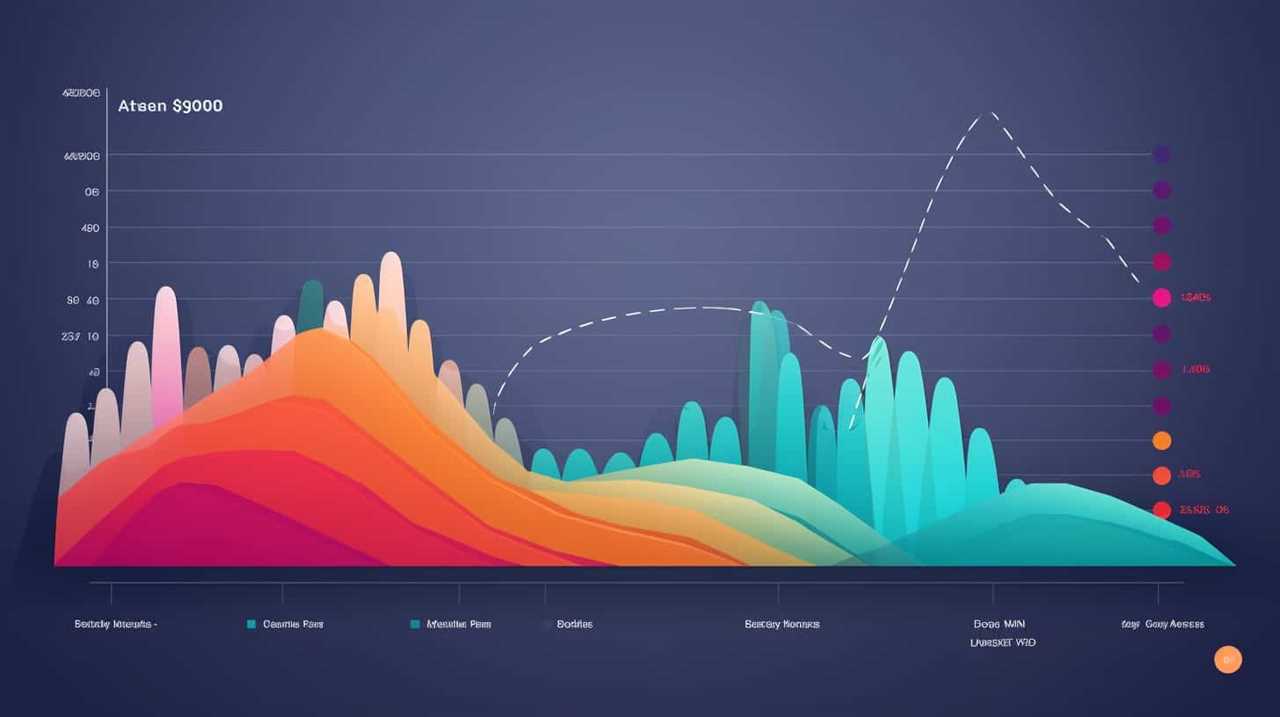
- User Engagement: High-quality content is more likely to engage users, keeping them on your site longer and reducing bounce rates. This signals to search engines that your website is valuable and deserving of a higher ranking.
- Reputation Building: Quality content helps establish your brand as a trusted authority in your industry. This can lead to increased brand awareness, credibility, and ultimately, more organic traffic.
- Link Building: Valuable, well-researched content is more likely to attract high-quality backlinks from other reputable websites. These backlinks are crucial for improving your website’s domain authority and search engine rankings.
Keyword Research Techniques
Now that we’ve prioritized quality over quantity in content creation and optimization, let’s delve into the effective keyword research techniques for holistic SEO.
One of the first steps in keyword research is conducting competitor analysis. By analyzing the keywords your competitors are targeting, you can gain valuable insights and identify opportunities for your own content.
Additionally, focusing on long tail keywords can help you target specific and niche audiences, resulting in higher conversion rates. Long tail keywords are longer and more specific phrases that have lower competition but higher intent. By incorporating these keywords into your content, you can attract highly motivated visitors who are more likely to engage with your website.
With a solid understanding of competitor analysis and long tail keywords, you can optimize your content to reach the right audience and improve your search engine rankings.
Now, let’s move on to the next section, where we’ll explore the importance of user experience and website design in holistic SEO.
User Experience and Website Design
Our research has revealed that implementing user-friendly website design is a crucial aspect of holistic SEO strategy. The user experience and website design play a significant role in user engagement and overall website performance.
Here are three key factors to consider when optimizing user experience and website design:
- Visual Appeal: A visually appealing website design captures users’ attention and encourages them to stay longer on your site. Using high-quality images, clear typography, and a clean layout can enhance the visual appeal of your website.
- Easy Navigation: A well-structured and intuitive navigation system allows users to find the information they need quickly and easily. Implementing clear menus, breadcrumbs, and search functionality can help improve user experience and reduce bounce rates.
- Mobile Responsiveness: With the increasing use of mobile devices, it’s crucial to ensure that your website is mobile-friendly. Responsive design allows your website to adapt to different screen sizes, providing a seamless experience for users on any device.
Mobile-Friendliness
When it comes to implementing holistic SEO, one crucial aspect to consider is mobile-friendliness.
With the rise of mobile devices, it’s essential to ensure that your website is optimized for mobile users. This can be achieved through responsive web design and mobile site optimization.
Responsive Web Design
To achieve optimal results in holistic SEO, we prioritize implementing responsive web design for mobile-friendliness. With the increasing use of smartphones and tablets, it’s crucial to ensure that your website is accessible and user-friendly across different devices.
Here are three reasons why responsive web design is essential for mobile-friendliness:
- Improved User Experience: Responsive design ensures that your website adapts to different screen sizes, providing a seamless browsing experience for mobile users. This leads to increased engagement, lower bounce rates, and higher conversion rates.
- Better SEO Performance: Google prioritizes mobile-friendly websites in search engine rankings. By implementing responsive design, you enhance your chances of ranking higher and driving organic traffic to your site.
- Cost and Time Efficiency: Responsive design eliminates the need for separate mobile app development, saving you time and resources. It also simplifies website speed optimization, as there’s only one version of your site to optimize.
Mobile Site Optimization
Implementing mobile site optimization is crucial for holistic SEO because it ensures that your website is mobile-friendly and accessible to a wider audience. In today’s digital landscape, more and more people are using their smartphones and tablets to browse the internet. Therefore, it’s essential that your website is optimized for mobile devices to provide a seamless user experience.
Two important aspects of mobile site optimization are mobile site speed and mobile site navigation. Mobile site speed refers to how quickly your website loads on mobile devices. A slow-loading website can frustrate users and lead to high bounce rates. On the other hand, a fast-loading website can improve user experience and increase the likelihood of conversions.
Mobile site navigation refers to how easily users can navigate your website on mobile devices. It’s important to prioritize simplicity and ease of use, ensuring that visitors can find the information they’re looking for quickly and effortlessly.
By optimizing your website for mobile devices, you can reach a larger audience and improve your website’s visibility in search engine rankings. This will ultimately lead to increased traffic and better overall SEO performance.
Now that we’ve discussed the importance of mobile site optimization, let’s move on to the next section: link building and outreach.

Link Building and Outreach
Effective link building and outreach are essential components of a holistic SEO strategy. By strategically building links and reaching out to relevant sources, you can improve your website’s visibility and authority, ultimately boosting its search engine rankings. Here are three key strategies to consider:
- Develop high-quality content:
Creating valuable and shareable content is crucial for attracting natural backlinks. Focus on producing informative articles, engaging videos, and helpful resources that other websites would want to link to. - Guest blogging:
Writing guest posts for reputable websites in your industry is an effective way to build quality backlinks. It allows you to showcase your expertise and reach a wider audience while earning valuable links back to your site. - Influencer outreach:
Collaborating with influencers and industry experts can help you gain exposure and build authoritative links. Reach out to relevant influencers, offer valuable content or partnerships, and leverage their networks to amplify your brand’s reach.
By implementing these link building strategies and outreach techniques, you can enhance your website’s visibility and credibility.
Now, let’s delve into the next section about social media integration.
SUBSEQUENT SECTION: ‘Social Media Integration’
Social Media Integration
Our approach to social media integration revolves around utilizing its potential to enhance our holistic SEO strategy. Social media engagement plays a crucial role in driving organic traffic and improving search engine rankings. By incorporating social media marketing strategies into our SEO efforts, we can amplify our brand’s reach and visibility.
Through regular content sharing, community building, and active engagement with our audience, we can create a strong online presence that not only attracts more visitors but also encourages them to interact and share our content. This increased engagement signals to search engines that our website is valuable and relevant, ultimately boosting our SEO performance.
Analytics and Reporting
To accurately measure the impact of our social media integration efforts, we rely on analytics and reporting to provide us with valuable data and insights. Data analysis plays a crucial role in understanding the performance of our SEO strategies and optimizing them for better results.
Here are three key reasons why analytics and reporting are essential for effective SEO implementation:
- Tracking Performance: Analytics allows us to monitor the performance of our website and individual pages, providing us with valuable information on user behavior, traffic sources, and conversion rates. By analyzing this data, we can identify areas of improvement and make data-driven decisions to enhance our SEO efforts.
- Identifying Trends: Through data analysis, we can uncover trends and patterns in user behavior, keyword rankings, and content performance. This helps us identify opportunities for optimization and adjust our SEO strategies accordingly.
- Measuring ROI: Analytics and reporting enable us to measure the return on investment (ROI) of our SEO initiatives. By tracking key metrics such as organic traffic, leads generated, and revenue generated, we can determine the effectiveness of our SEO efforts and justify our investment in holistic SEO.
Continuous Monitoring and Optimization
By implementing continuous monitoring and optimization, we can ensure that our SEO strategies remain dynamic and responsive to the ever-changing digital landscape.
Continuous improvement is vital in the world of SEO, as algorithms and trends are constantly evolving. Through regular monitoring of our website’s performance, we can identify areas of improvement and make necessary adjustments to enhance our online visibility and rankings.
A/B testing is another powerful tool we can utilize to optimize our SEO efforts. By testing different versions of our website, content, or marketing campaigns, we can gather valuable data and insights to determine which strategies are most effective in driving traffic and conversions.
This data-driven approach allows us to make informed decisions and refine our SEO strategies for maximum impact.
With continuous monitoring and optimization, we can stay ahead of the game and achieve long-term success in the competitive world of SEO.
Frequently Asked Questions
How Can I Determine the Right Keywords to Target for My Website?
To determine the right keywords for your website, we use keyword research tools and employ SEO keyword optimization. By analyzing search volume, competition, and relevance, we identify the most effective keywords to target for optimal website performance.
What Are Some Best Practices for Optimizing On-Page Elements Like Title Tags and Meta Descriptions?
Optimizing on-page elements like title tags and meta descriptions is crucial for improving SEO. We’ll discuss how to strategically place keywords and craft enticing copy that attracts both search engines and users.
How Can I Improve the Technical Aspects of My Website, Such as Site Speed and Crawlability?
To improve website performance and enhance accessibility, we focus on optimizing site speed and crawlability. By implementing techniques such as optimizing images, minifying code, and improving server response time, we can ensure a smooth and efficient user experience.
What Are Some Strategies for Creating Quality Content That Both Search Engines and Users Will Love?
Creating engaging content that incorporates multimedia is crucial for both search engines and users. By focusing on high-quality, informative content, we can optimize our website for better visibility and user experience.

How Can I Ensure That My Website Offers a Great User Experience and Is Visually Appealing in Terms of Design?
To ensure a visually appealing website design and great user experience, we focus on creating a seamless interface with intuitive navigation, engaging visuals, and responsive layouts that adapt to different devices.
Conclusion
Implementing holistic SEO is like nurturing a thriving garden.
By carefully choosing the right keywords, optimizing on-page elements, and ensuring technical excellence, we lay the foundation for success.
Creating quality content, designing user-friendly websites, and building strong connections through link building and social media integration are the seeds that grow into fruitful results.
With continuous monitoring and optimization, we cultivate a flourishing online presence that delights both search engines and users alike.
Together, we can transform your website into a vibrant digital sanctuary.
Holistic SEO
7 Best Ways Voice Search Influences Holistic SEO

Exploring the domain of comprehensive SEO, we discover an innovative power that’s transforming the digital scene: voice search. This capacity to revolutionize the user experience calls for our focus.
Through this article, we explore seven best ways in which voice search influences SEO strategies. From the importance of long-tail keywords to the rise of featured snippets, we unveil the secrets to optimizing for this emerging era.
Join us on this journey towards mastery in the realm of voice search and holistic SEO.
Key Takeaways
- Voice search optimization improves website visibility and organic traffic
- Optimizing for long-tail keywords and natural language is crucial for voice search optimization
- Voice search has a direct impact on local SEO and business listings
- Mobile optimization is essential for voice search, as the majority of voice searches are conducted on smartphones.
Enhanced User Experience Through Voice Search
We have found that voice search enhances the user experience by providing faster and more convenient access to information. With the advancements in natural language processing and voice search analytics, users can now interact with their devices in a more conversational and intuitive manner.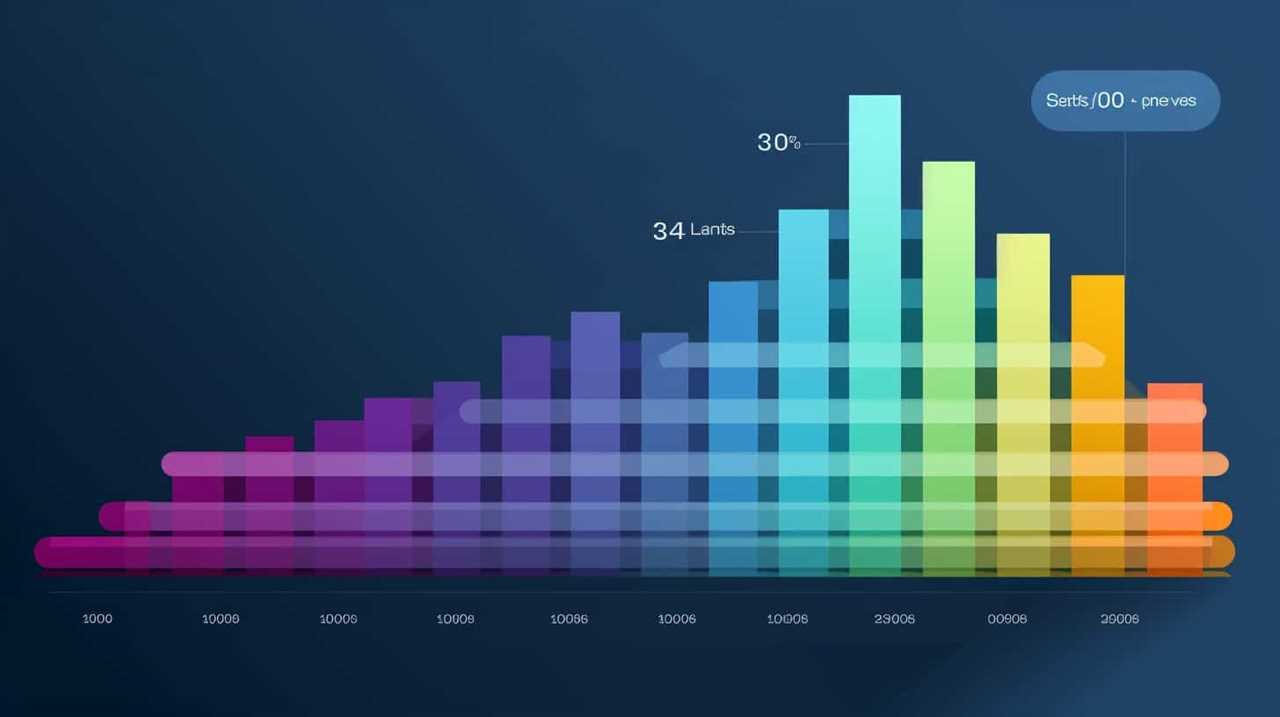
This means that instead of typing in a search query, users can simply speak their requests, allowing for a more seamless and efficient search experience. Voice search also eliminates the need to navigate through multiple pages of search results, as the device can provide the most relevant information directly.
This not only saves time but also improves user satisfaction. By incorporating voice search into our SEO strategies, we can cater to the needs and preferences of our audience, ultimately enhancing their overall experience.
Increased Importance of Long-Tail Keywords
The growing prominence of voice search necessitates a shift towards prioritizing long-tail keywords for a more targeted and effective SEO strategy. As voice search continues to rise in popularity, it is important for businesses to adapt their keyword strategies to align with voice search optimization. Long-tail keywords, which are longer and more specific phrases, are becoming increasingly important in capturing voice search queries. These keywords allow businesses to target a more niche audience and improve their chances of appearing in voice search results. To illustrate this shift, consider the following table:
| Traditional Keywords | Long-Tail Keywords |
|---|---|
| Buy shoes | Buy men’s running shoes |
| Hotel | Luxury beachfront hotel |
| Recipe | Healthy vegan dessert recipe |
| Laptop | Lightweight gaming laptop |
| Workout | HIIT workout for beginners |
As voice search trends continue to evolve, incorporating long-tail keywords into your SEO strategy will be crucial for staying competitive and reaching your target audience effectively.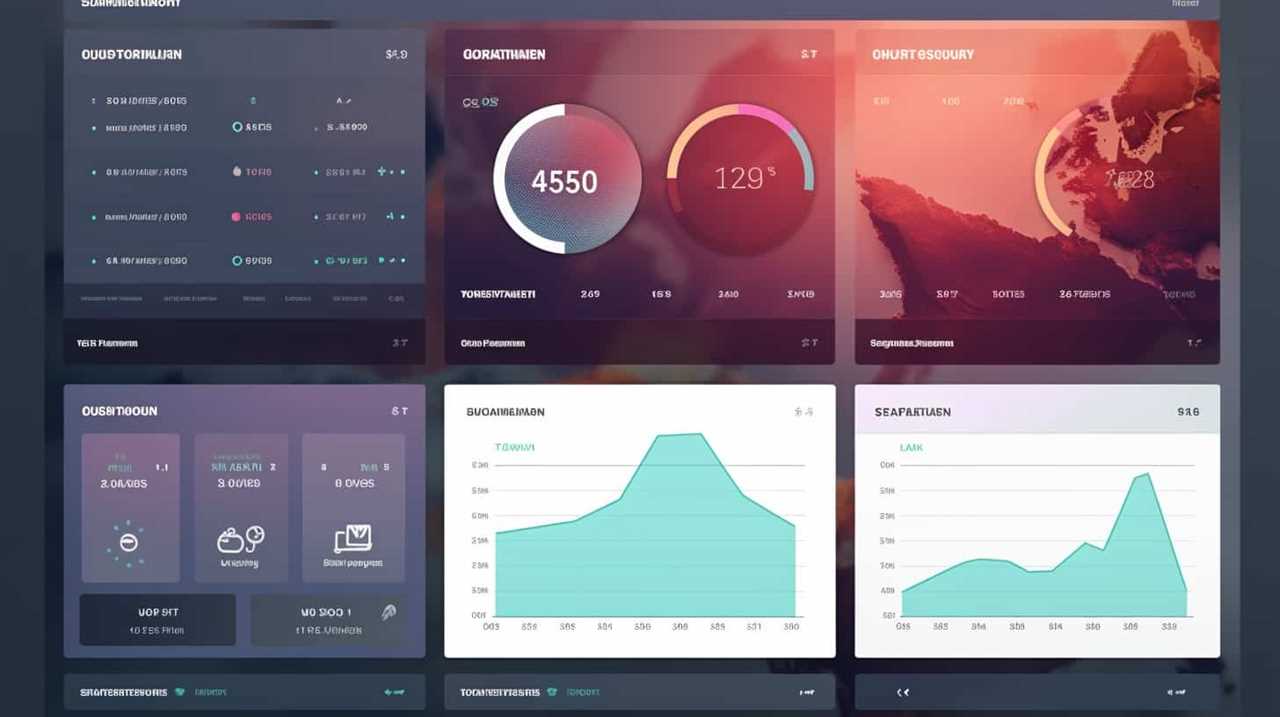
Need for Conversational Content Optimization
To ensure optimal results in voice search rankings, it’s imperative to implement conversational content optimization strategies. With the rise of voice search and natural language processing, it’s crucial to create content that mirrors the way people speak and ask questions. This means focusing on long-tail keywords and incorporating conversational phrases and queries into your content.
By doing so, you can improve your website’s visibility and attract more voice search users. Additionally, conversational content optimization can enhance the user experience and increase conversion rates. By understanding how people naturally speak and tailoring your content to match their language patterns, you can create a more engaging and interactive experience for your audience.
This, in turn, can lead to higher customer satisfaction and increased conversion rates. So, don’t underestimate the power of conversational content optimization in improving your voice search rankings and overall SEO strategy.
Rise of Featured Snippets in Voice Search Results
Featured snippets are becoming increasingly prominent in voice search results. As voice search optimization continues to gain importance, it’s crucial for businesses to understand the impact of featured snippets on their SEO strategies.
Voice assistants like Siri, Alexa, and Google Assistant often rely on featured snippets to provide quick and concise answers to user queries. These snippets appear at the top of search engine results pages (SERPs) and are designed to provide immediate information.
Therefore, optimizing content for featured snippets can significantly enhance visibility in voice search results. By focusing on creating high-quality, concise, and informative content that directly answers user questions, businesses can increase their chances of being featured in voice search results.
Now, let’s explore the impact of featured snippets on local SEO and business listings.
Impact on Local SEO and Business Listings
As we delve into the impact of featured snippets on local SEO and business listings, it’s important to understand how optimizing for voice search can significantly enhance visibility for businesses.
Voice search optimization for mobile devices is becoming increasingly crucial as more and more people use voice assistants like Siri, Alexa, and Google Assistant to find local businesses. By incorporating relevant keywords and phrases into their website content, businesses can improve their chances of appearing in voice search results.
Additionally, voice search and the future of SEO strategy go hand in hand when it comes to local SEO and business listings. As voice search continues to evolve and become more prevalent, businesses that prioritize optimizing for voice search will have a competitive edge in the digital landscape.
It’s essential for businesses to adapt their SEO strategies to ensure they’re effectively targeting voice search users and maximizing their visibility in local search results.
Frequently Asked Questions
How Does Voice Search Enhance the User Experience?
Using voice search enhances the user experience by improving accessibility and increasing engagement. It allows for hands-free interaction and quick information retrieval, making it convenient and efficient for users.

What Are Some Examples of Long-Tail Keywords That Are Important for Voice Search?
Examples of long-tail keywords for voice search are crucial for optimizing conversational content. By understanding the importance of these keywords, we can create a strategic approach to voice search that enhances our mastery of holistic SEO.
How Can Businesses Optimize Their Content to Be More Conversational for Voice Search?
To optimize our content for voice search, we focus on content optimization and adopting a conversational tone. By incorporating these strategies, we ensure that our content aligns with the preferences of voice search users.
How Do Featured Snippets Play a Role in Voice Search Results?
Featured snippets play a vital role in voice search results. Structured data helps search engines understand and display relevant information, while natural language processing enables accurate interpretation of spoken queries.
What Are the Specific Impacts of Voice Search on Local SEO and Business Listings?
Voice search significantly impacts local SEO and business listings. Schema markup plays a crucial role in optimizing for voice search. It is important to understand the specific impacts of voice search on local SEO and how to leverage schema markup for better optimization.
Conclusion
In conclusion, the impact of voice search on holistic SEO can’t be underestimated. It has revolutionized the way users interact with search engines, emphasizing the need for optimized long-tail keywords and conversational content.
The rise of featured snippets in voice search results has also changed the game for businesses. Additionally, local SEO and business listings have experienced a significant shift.
With all these changes, it’s ironic how voice search has transformed the SEO landscape, forcing us to adapt and evolve our strategies for success.
-

 Expert Content Authority2 weeks ago
Expert Content Authority2 weeks agoThe Pillar of SEO: Why Content Consistency Matters Most
-

 Learning Center2 weeks ago
Learning Center2 weeks agoUncover How To Use ChatGPT to Write Effective Ad Copy
-

 Learning Center1 week ago
Learning Center1 week agoAI in 2024: 10 Things We are NOT Looking Forward To
-

 Holistic SEO3 weeks ago
Holistic SEO3 weeks agoHolistic Local SEO Tactics for Small Businesses
-

 Learning Center2 weeks ago
Learning Center2 weeks agoOptimize Your Digital Experience with Akamai CDN
-

 Learning Center3 weeks ago
Learning Center3 weeks agoExperience How GPT-4 Turbo Beats Claude 2: A Review
-

 Learning Center3 weeks ago
Learning Center3 weeks agoMastering SEO through the Google SGE Lens: A Comprehensive Guide
-

 Holistic SEO2 weeks ago
Holistic SEO2 weeks agoMaximize Engagement with YouTube Videos End Screens















